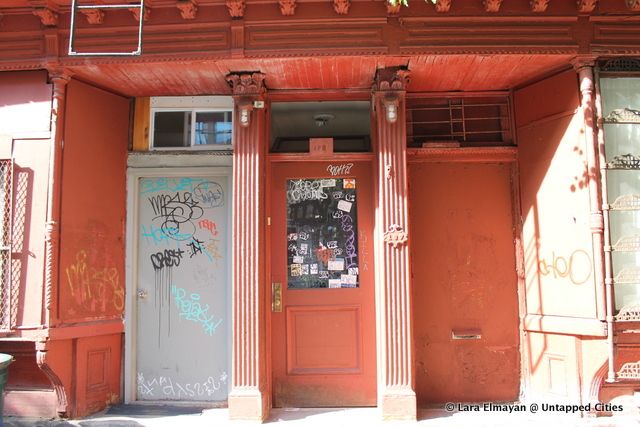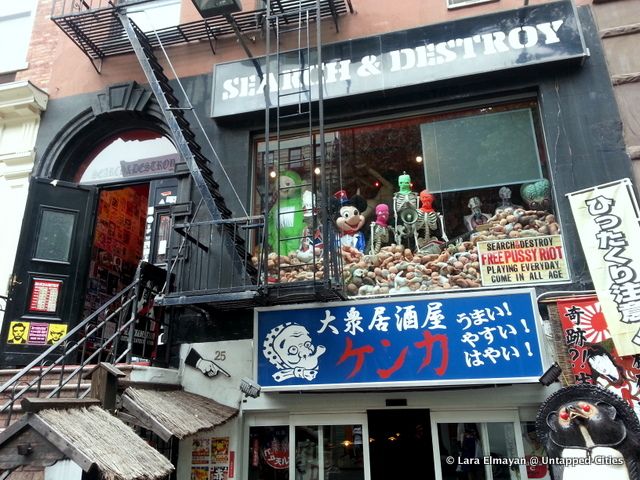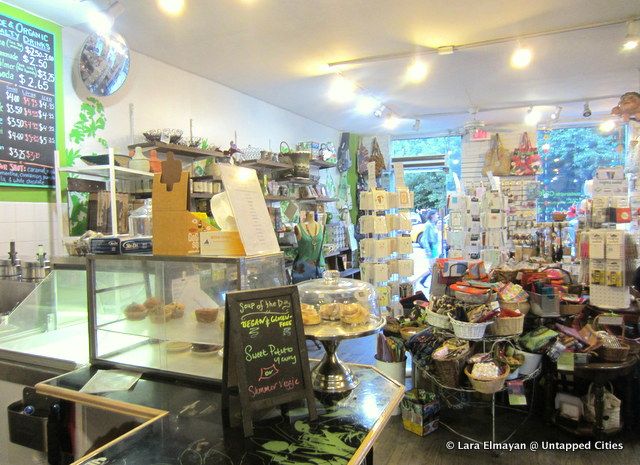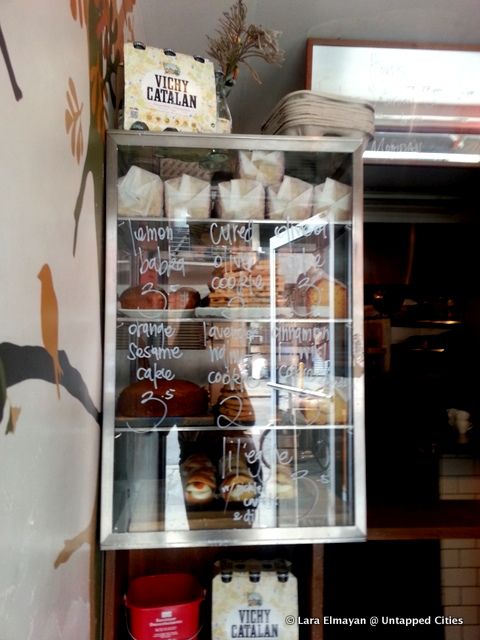Last Chance to Catch NYC's Holiday Notalgia Train
We met the voices of the NYC subway on our nostalgia ride this weekend!


The East Village may be gentrifying, but it’s still one of the last refuges for bohemia in Manhattan, and the coolest place to say you got that regrettable tattoo. The neighborhood around Tompkins Square Park has seen its share of immigrants, artists, musicians, drug dealers, gangsters, beatniks, hippies, anarchists, and punks – and eventually, yuppies and tourists who have seen RENT too many times. Our guide only features some favorites of ours, as it would be difficult to write an exhaustive and descriptive guide. So wander in and marvel at the fact that one neighborhood can still have so much soul.

If you love slam poetry and live in New York, you’ve been to the Nuyorican, one of the last remaining places dedicated to poetry in Manhattan. Even if you don’t, give the Nuyorican a try anyway. Their team of in-house poets is the most inspiring, thoughtful, witty, even hilarious one in the city. And you will get hyped up to hear them–the venue’s hosts are usually nothing short of fabulous, and get the audience dancing between sets. Readings are frequently presided over by DJs with preferences for old school hip hop. When visiting, keep in mind that the word “cafe” is a bit of an exaggeration–there’s a bar you have to fight to get to, and some very closely-packed seating facing the stage.

Japanese immigrants never really settled together in any one area in New York City like immigrants from China and Taiwan, but one of the most concentrated areas of Japanese businesses in New York is centered around 9th Street, scattered in between vintage boutiques and residential buildings. Sit down for exotic desserts at the adorable Cha-An tea house on 9th Street, or go to St. Mark’s Place for the most interesting hot dog you’ll ever have at Japadog. The streets are also abundant with Japanese hair salons, spas, massage places, and grocery stores.

The East Village is home to the greatest concentration of community gardens in the United States, all of which were hard-won by activists. It’s impossible to fully take in the vibe of the East Village without visiting a few of them. Many have innovative art by local artists; some of the cuter ones have kitschy gnomes or Buddhas hidden among vegetable patches. Our favorite garden, though, is devoid of these. Parque de Tranquilidad is exactly what its name suggests, a place of total tranquility that seems removed even from the East Village in the totality of nature’s dominance. If not for the buildings surrounding it, it would be easy to place the small park in the Catskills, and however tiny it might be, it’s easy to lose yourself in.

St. Mark’s Place is punk’s geographical embodiment. After visiting the former CBGB and the church where church where Patti Smith crooned her first punk poetry, you could go to Trash & Vaudeville, the famous punk/goth store where Springsteen and the Ramones shopped–but that, quite frankly, would not be untapped. Instead, pay a visit to Search & Destroy, Trash’s vintage equivalent. The reassembled dolls in the windows, dominatrix gear, and giant Ronald McDonald heads are occasionally less alarming than prices for used t-shirts, but prices are mostly fair. And although the disturbing statues and the pornification of beloved Disney characters seem designed to keep out the pure of heart, the staff is incredibly friendly, even to the unpierced.

Feel slightly less guilty about indulging your consumerist cravings at Sustainable NYC, a beautiful shop across from Tompkins Square that stocks local organic, re-purposed, biodegradable, and Fair Trade cosmetics, clothes, home goods, and gifts. The convenient health food cafe in the store provides respite in the event that the overwhelming selection amps up your hunger for a spinach and feta biscuit. The best thing about Sustainable might be the fact that they carry six flavors of the celebrated vegan ice cream from Lula’s Sweet Apothecary a few blocks away. (Lula’s is currently closed, and normally has much more limited hours than Sustainable NYC.) Vegans and omnivores alike swear that the lack of lactose does not deduct from taste and texture.

Visiting this museum might be the best way to learn the essence of East Village short of assimilating into an artist’s squat or chaining yourself to a tree in a community garden. The museum is housed in well-known C-Squat, which was sold by the government to a non-profit for $1 in 2002, and now is being turned into a low-income co-op for the squatters who live there. The museum itself showcases New York’s recent history of protests, grassroots movements, and environmental activism. Read our more extensive coverage of it here.

Bill Weinburg, who gives a “Radical Alphabet City” tour from MoRUS, alerted us to the presence of premier Beat Generation poet Allen Ginsberg’s former apartments, which must inevitably be pilgrimage stops for any neo-beatniks. From 1952-53, Ginsberg kept an apartment on the third floor of 206 East 7th Street (pictured above). His lover at the time, William S. Burroughs, shared the apartment with him. After Ginsberg left New York and completed his famously controversial poem “Howl” in San Francisco, he came back to the East Village, this time settling on East 2nd Street for three years with his lifelong partner Peter Orlovsky. Ginsberg remains one of the East Village’s most remembered former residents. A HOWL! Festival is held every June in Tompkins Square Park in celebration of the poem that fueled a censorship case and now is being used as a symbol of the free expression that the East Village is known for embracing.

Abraço has standing room for roughly six people, and no seating except for a wooden table and bench outside. It needs nothing more, because Abraço is a pilgrimage site for many local self-proclaimed coffee snobs, for people who search far and wide for coffee like they had during their semesters in Venice. These ex-ex-pats swear that the coffee has European strength and perfection–a fact also attested to by some exceptionally erotic Yelp reviews. The coffee also comes in European sizes. Abraço’s other draw (as if we needed a second one) is its amazing olive oil cakes, and the slew of other unique baked goods it sells on a rotating basis.
Read more about the East Village here. Get in touch with the author @laraelmayan.
Subscribe to our newsletter